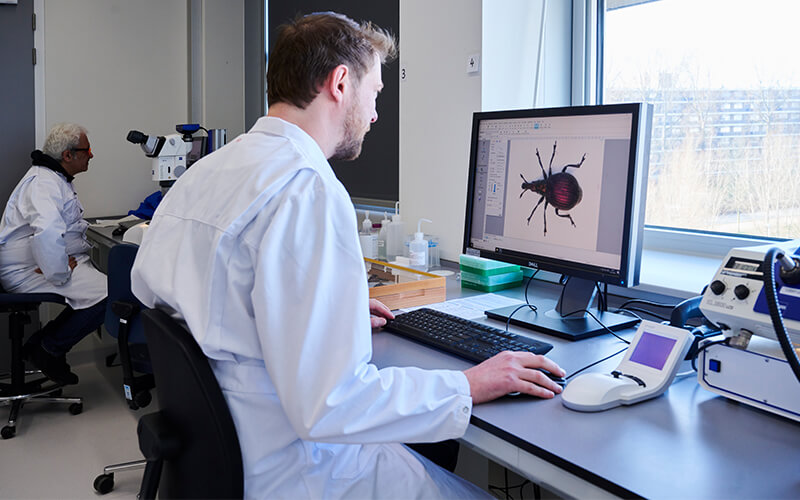The long read
Why do natural scientists need DiSSCo?

European Natural Sciences Collections (NSC) are a pivotal infrastructure for meeting the most important challenge humans face over the next decades – mapping a sustainable future for ourselves and the natural systems upon which we depend – and for answering fundamental scientific questions about ecological, evolutionary, and geological processes. Data derived from European NSCs underpin countless discoveries and innovations, including tens of thousands of scholarly publications and official reports annually (used to support legislative and regulatory processes on land use, societal infrastructure, health, food, security, sustainability and environmental change); inventions and products essential to our economy; databases, maps and descriptions of scientific observations; educational material for students; and instructive resources for the public.
In the last decades, however, research practice tools have changed dramatically. Digital transformation and instrumentation, remote sensing, rapid identification and molecular approaches allow us to efficiently monitor the changing world and to better understand the causes of those changes. As the volume and diversity of information derived from NSCs are exponentially increasing, so does the need for suitable infrastructures that go further than providing simple access to different data classes. A holistic approach is now required, where cross-linked information effectively underpins the entire research life cycle and provides open access to mass and precise data. New technologies are providing opportunities to develop new tools that combine the data held in NSCs with other sources of information on species, genomes, phenotypes, geography, geology and the environment in ways that drive novel, integrative research.
Prime examples of those are:
- The compilation of data on the distribution of living species that is held by the Global Biodiversity Information Facility (GBIF)
- The genetic sequence information that is collated by DDBJ, EMBL, GenBank and iBOL.
- The data on morphology held by MorphoBank and TraitBank.
- Geo-collection data that is held in GeoCASe.
At present, however, the exploitation of such opportunities is severely limited by the low proportion of the collections that is digitally accessible and can then be used for comprehensive research; the lack of a common platform for access to NSCs specimen information; incomplete and/or broken links between major data sources about the natural world; and weak informatics tools to facilitate data exploitation and use. Furthermore, fragmentation of access policies, practices and models across hundreds of NSC locations severely impedes reaching the full potential of NSCs as unique global scientific asset.
We live in a key moment for humanity; the global human population is predicted to peak in 2050, a fact that is making the next 30 years unique in the history of our planet’s species, our human civilisations and the way they interact. In this context, NSCs are a key resource that can support human decisions for the short- to medium-term with an understanding of the mechanisms that determine the long-term impacts of environmental change.

DiSSCo’s revolutionary approach
The scientific and technical approach to the DiSSCo mission can be very briefly summarised. DiSSCo sets the physical objects, the specimens, at the epicentre of the development of a robust, quality ensured and fit-for-purpose knowledge base for bio- and geo-diversity. This way, DiSSCo aims at putting NSC-derived information at the very core of data-intensive bio- and geodiversity sciences. To implement this revolutionary approach , it is imperative that institutions that hold NSCs not only improve the efficiency of access and reach of their assets, but that they completely change their business model to support a transformative shift in the way NSCs are used across scientific disciplines.
By building the required economies of scale (i.e. the pool of resources to improve overall effectiveness), DiSSCo will significantly improve the role of NSCs in frontier scientific research. Furthermore, organisations will benefit from being able to better understand, describe and monitor the impact of their collections data in different scientific disciplines. Finally, organisations will be able to develop their specialisation and prioritisation strategies, within the wider DiSSCo community and in alignment with national primacies (e.g. Smart Specialisation Strategies), as well as developing and harmonising common research and innovation agendas.
DiSSCo RI works for the digital unification of all European natural science assets under common curation and access policies and practices that aim to make the data easily Findable, more Accessible, Interoperable and Reusable (FAIR).